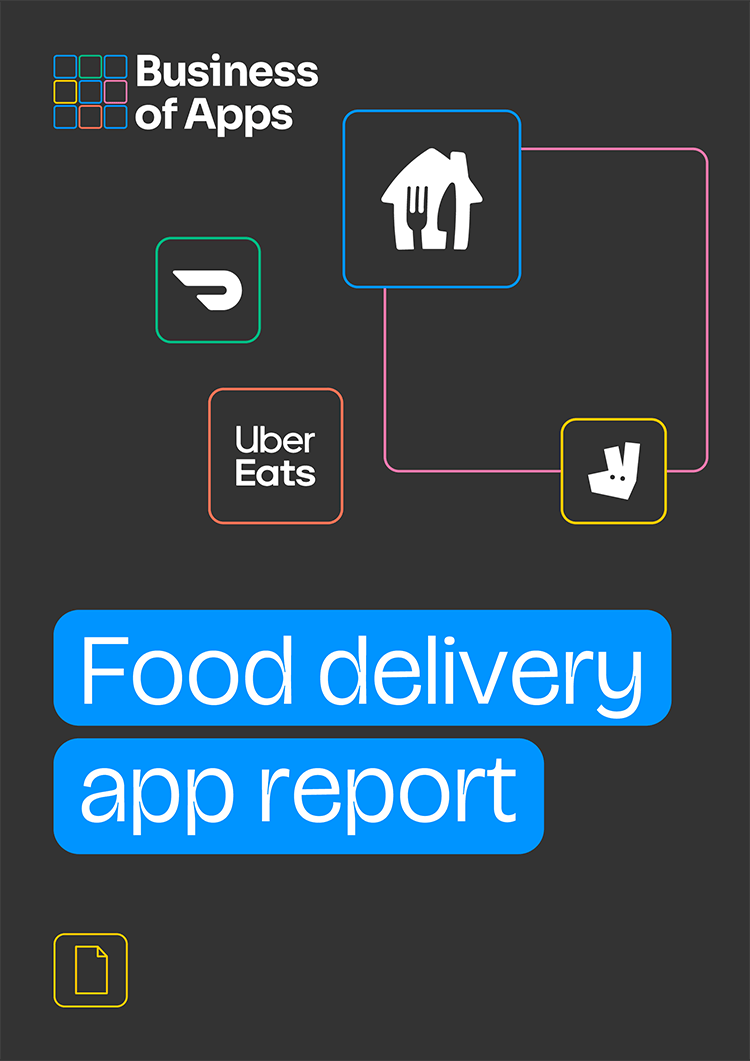In a sea of food delivery apps, Postmates stands out not because of its business or employment model, but because of its tentativeness towards food delivery. Postmates CEO Bastian Lehmann has repeatedly said he runs an on-demand logistics platform, and “food to Postmates is what books were to Amazon”.
At launch, Postmates marketed itself as the new Craigslist. Buyers in San Francisco could have anything, from flowers to refrigerators, delivered in two to four hours. It was primarily targeted at small businesses, and took a few years to pivot to consumers.
For the first two years, Postmates survived payment to payment, without the yearly billion dollar funding rounds we see today. In 2013, the Founder’s Fund invested $5 million, which legitimized the industry and caused a wave of further investments. A few months later, DoorDash and Instacart would both land large series A rounds.
Food delivery shouldn’t have worked on Postmates. It had a flat $9.99 delivery fee, while its rivals Grubhub and DoorDash offered delivery for far lower prices. However, in California people were more than willing to pay the delivery charge for their favourites.
In 2015, Postmates finally lowered its delivery fee to $3.99 for preferred merchants, who would be featured prominently on the platform. It also was the first to launch a pro service, Unlimited, which waivers the delivery charge for all orders over $30 for $9.99 a month.
Postmates has courted some controversy for its ‘deliver everything’ mantra, often going against the wishes of restaurants and businesses. In 2015, several business owners complained about Postmates taking delivery orders without receiving permission.
As more on-demand delivery services launched, Postmates saw its market share tumble, as Uber Eats and DoorDash supplanted Grubhub. It continued to see growth in some cities, like Los Angeles and Charlotte, NC, but was far behind the leaders in total US marketshare.
In 2018, DoorDash attempted to merge the two companies, to fend off Grubhub and Uber Eats. Postmates declined the offer, which led to DoorDash acquiring Caviar from Square. Two years later, Postmates sided with Uber in a $2.65 billion acquisition. It recently laid off 15 percent of Postmates workers, but has not said anything about merging the platforms.
We have collected data and statistics on Postmates. Read on below to find out more.
Postmates key statistics
- Postmates made $730 million revenue in 2021, a 14% increase year-on-year
- Postmates has 9.3 million monthly active users, who order five million items a month
- Over 600,000 merchants are partners on Postmates
- Uber acquired Postmates in 2020 for $2.65 billion
Want to learn more about the food delivery app industry? Our Food Delivery App report includes breakdowns of all of the top apps by revenue, GMV and orders, alongside regional market share statistics, usage, and downloads. Food Delivery App Report 2024
Postmates overview
| Title | Title 2 |
|---|---|
| Launch date | 1 May 2011 |
| HQ | San Francisco, California |
| People | Bastian Lehman (CEO), Sean Plaice (CTO), Dara Khosrowshahi (Uber CEO) |
| Business type | Subsidiary |
| Parent company | Uber |
| Industry | Food delivery |
Postmates revenue
Postmates made an estimated $730 million revenue. It last reported revenue of $500 million for the full year 2019.
Postmates annual revenue 2014 to 2021 ($mm)
| Year | Revenue ($mm) |
|---|---|
| 2014 | 8.6 |
| 2015 | 55 |
| 2016 | 135 |
| 2017 | 250 |
| 2018 | 400 |
| 2019 | 500 |
| 2020 | 640 |
| 2021 | 730 |
Sources: Company data, Food Delivery App Report, TechCrunch
Postmates users
Postmates had 9.3 million monthly active users in 2021, a slight increase on the 8.8 million in 2020.
Postmates annual users 2016 to 2021 (mm)
| Year | Users (mm) |
|---|---|
| 2016 | 2.5 |
| 2017 | 4 |
| 2018 | 5.5 |
| 2019 | 6 |
| 2020 | 8.8 |
| 2021 | 9.3 |
Sources: Company data, Food Delivery App Report
Postmates deliveries per month
Postmates completed an average of five million deliveries per month in 2020.
Postmates annual monthly deliveries 2016 to 2020 (mm)
| Year | Deliveries (mm) |
|---|---|
| 2016 | 1.5 |
| 2018 | 4 |
| 2020 | 5 |
Sources: Startup Grind, TechCrunch
Postmates merchants
Approximately 600,000 merchants were partnered with Postmates in 2020.
Postmates annual partnered merchants 2018 to 2020
| Year | Merchants |
|---|---|
| 2018 | 250,000 |
| 2019 | 400,000 |
| 2020 | 600,000 |
Source: Company data
Postmates valuation
Postmates was valued at $2.65 billion by Uber when it acquired the company in 2020.
Postmates valuation 2015 to 2020 ($bn)
| Year | Valuation ($bn) |
|---|---|
| 2015 | 0.4 |
| 2016 | 0.6 |
| 2018 | 1.8 |
| 2019 | 2.4 |
| 2020 | 2.6 |
Sources: Business Insider, Crunchbase
Postmates US food delivery marketshare vs competitors
Want to learn more? Get our premium food delivery report
Postmates FAQ
What is Postmates annual sales volume?
Postmates surpassed $1 billion in total sales volume in 2018 and reached $4 billion in 2020 (CNBC)
How many Postmates customers subscribe to its Unlimited service?
23 percent of Postmates customers subscribe to its premium service, according to Second Measure
More Delivery App Data
- Uber Eats Revenue and Usage Statistics (2025)
- Instacart Revenue and Usage Statistics (2025)
- Just Eat Revenue and Usage Statistics (2025)
- Food Delivery App Revenue and Usage Statistics (2025)
- Grubhub Revenue and Usage Statistics (2025)
- Deliveroo Revenue and Usage Statistics (2025)
- Gopuff Revenue and Usage Statistics (2025)
- Rapid Delivery App Revenue and Usage Statistics (2025)
- Getir Revenue and Usage Statistics (2025)
- DoorDash Revenue and Usage Statistics (2025)


